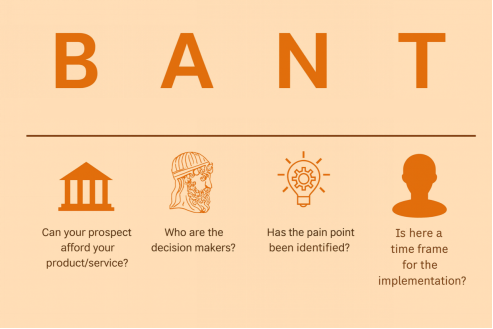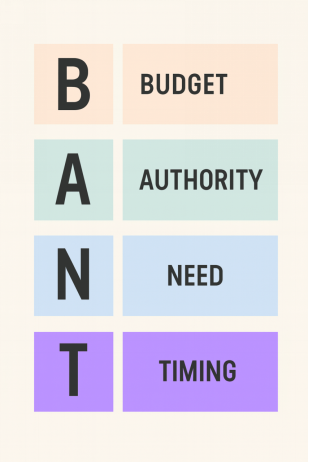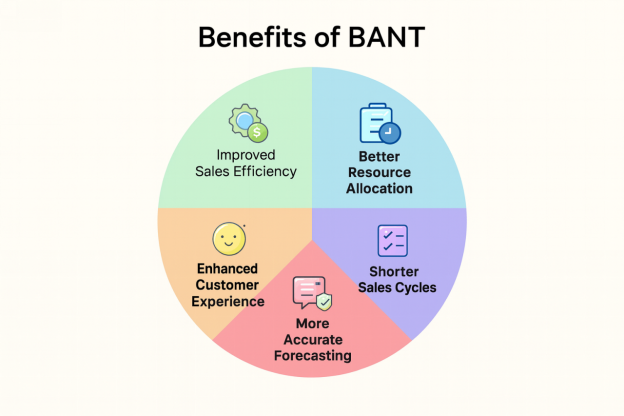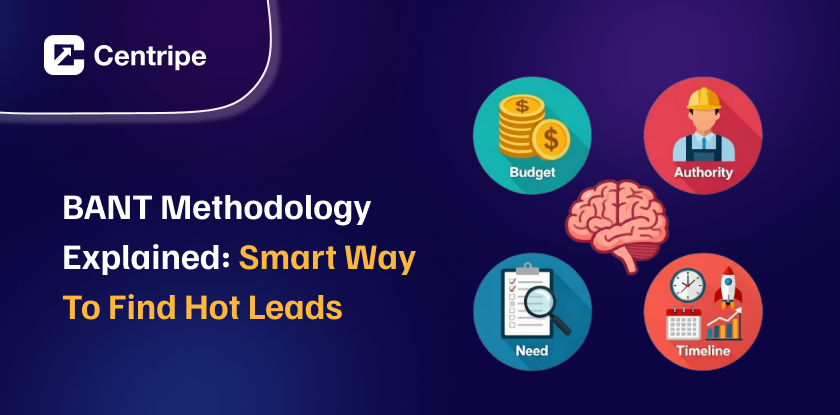In sales, not every person who talks to you… will actually buy from you.
Some don’t have money, some can’t make decisions, and some don’t even need what you’re selling.
We’ve all been there.
Frustating?…. Right.
That’s where…..
BANT methodology helps in qualifying leads by checking 4 things: Budget, Authority, Need, Timeline, so you don’t waste time on dead ends.
In this guide, I’ll show you how BANT works, how to use it in today’s sales world, and the smart tweaks top teams are making to close deals faster.
What is the BANT Methodology?

BANT Methodology is a lead qualification framework that was developed back in the 1960s. It helps sales teams figure out if leads are worth your time by looking at 4 key things: Budget, Authority, Need, and Timeline.
Use BANT as a compass for your sales calls. BANT helps you ask the right questions and save you from wasting time on leads that won’t buy.
What does BANT stand for?

B- Budget
This is not just about how much money a prospect has. It’s about their spending priorities, ability to afford your product, and whether they can find the budget if you show enough value.
A- Authority
Today, 6-10 people usually make buying decisions. You need to know who they are, who decides, who influences, and how they work together.
N- Need
This matters a lot. Does the customer have a real problem that your product can solve? If not, chasing the lead wastes time.
T- Timeline
When will they solve the problem? Next month, next year, or later? Their timelines show which leads need your focus now and which can’t wait.
How to Apply the BANT Sales Framework: A Modern Approach
Step 1: Reframe BANT as a Conversation Guide
One of the biggest mistakes sales reps make? Treating the BANT framework as a boring list of questions:
‘What’s your budget? Who’s the decision maker? When can you buy?
Instead, turn BANT into a natural conversation that helps you understand the buyer, not just qualify them.
Budget →Talk about Investment, not just cost
Don’t ask “What’s your budget?” bluntly.
Instead, ask how they decide on spending what ROI matters, and how budgeting works for projects like yours.
Authority → Map Stakeholder
Don’t just find one decision maker, understand the whole team:
- Who else is affected by this?
- How do decisions usually get made?
- Who might question this, and what will they care about?
Need → Focus on Business Impact
Don’t just match features to needs, measure the pain in real terms:
Quantify pain like below:
- “What’s this problem costing you right now?”
- “If nothing changes, what will things look like in 6 months?”
- “How are you measuring success in this area today?”
Timeline → Implementation Reality
Get beyond “When do you want to buy?” and understand the full picture:
- “What’s driving the urgency here?”
- “What else is on your plate that might compete with this?”
- “What would need to happen internally before you could pull the trigger?”
Step 2: Implement a Scoring System
Use a simple BANT scoring system to know which leads to focus on. Give points based on the following factors:
Budget (25 points)
- Allocated budget: 25 points
- Budget identified but not approved: 15 points
- No budget but strong ROI case: 10 points
- No budget or business case: 0 points
Authority (25 points)
- Direct decision-maker engaged: 25 points
- Strong champion with executive access: 20 points
- Influencer engaged: 10 points
- No clear path to decision-makers: 0 points
Need (30 points)
- Critical business need with quantified impact: 30 points
- Important need with clear pain points: 20 points
- Nice-to-have improvement: 10 points
- No clear need identified: 0 points
Timeline (20 points)
- Implementation within 3 months: 20 points
- Implementation within 6 months: 15 points
- Implementation within 12 months: 10 points
- No defined timeline: 0 points
Here’s my rule of thumb: 70+ points = drop everything and work this deal. 50-69 = worth nurturing. Below 50 = maybe check back next quarter.
Benefits of Using BANT for Lead Qualification

1. Improved Sales Efficiency
When you know which deals are truly serious, you don’t waste time on leads that won’t go anywhere. As per research, companies using BANT close 15% more deals and sell 20% faster.
2. Better Resource Allocation
For my Marketing Ops friends out there, BANT is gold. It helps marketing and sales agree on what makes a good lead.
This way, sales only gets leads that are worth their time, so both teams work better together.
3. Shorter Sales Cycles
When you understand a prospect’s needs early, you can focus on what matters most. This means no generic pitches or pointless demos.
As per a recent study, teams using BANT close deals about 23% faster, nearly a quarter less time per sale.
4. More Accurate Forecasting
BANT-qualified opportunities close more predictably. Your sales leaders will love you when their forecasts actually match reality.
Not just this, it’s way easier to plan resources when you know which deals are likely to close.
5. Enhanced Customer Experience
When you use BANT questions in a natural conversation, buyers appreciate it. This builds trust and makes the sales process smoother for everyone.
Conclusion
By now, you know BANT can change how you qualify leads.
It’s simple, proven. Helps you ask the right questions so you know who’s ready to buy and who’s not.
The best part? You don’t need to guess. By checking their budget, Authority, Need, and Timeline, you can focus only on leads that matter.
How to start using BANT today:
- Go through your lead list and check each one against BANT.
- Use simple tools or CRM features to collect this info automatically.
- Train your team so everyone uses the same playbook, every time.
Stop wasting your time on dead ends. Use BANT to find the real deals and close them faster.
